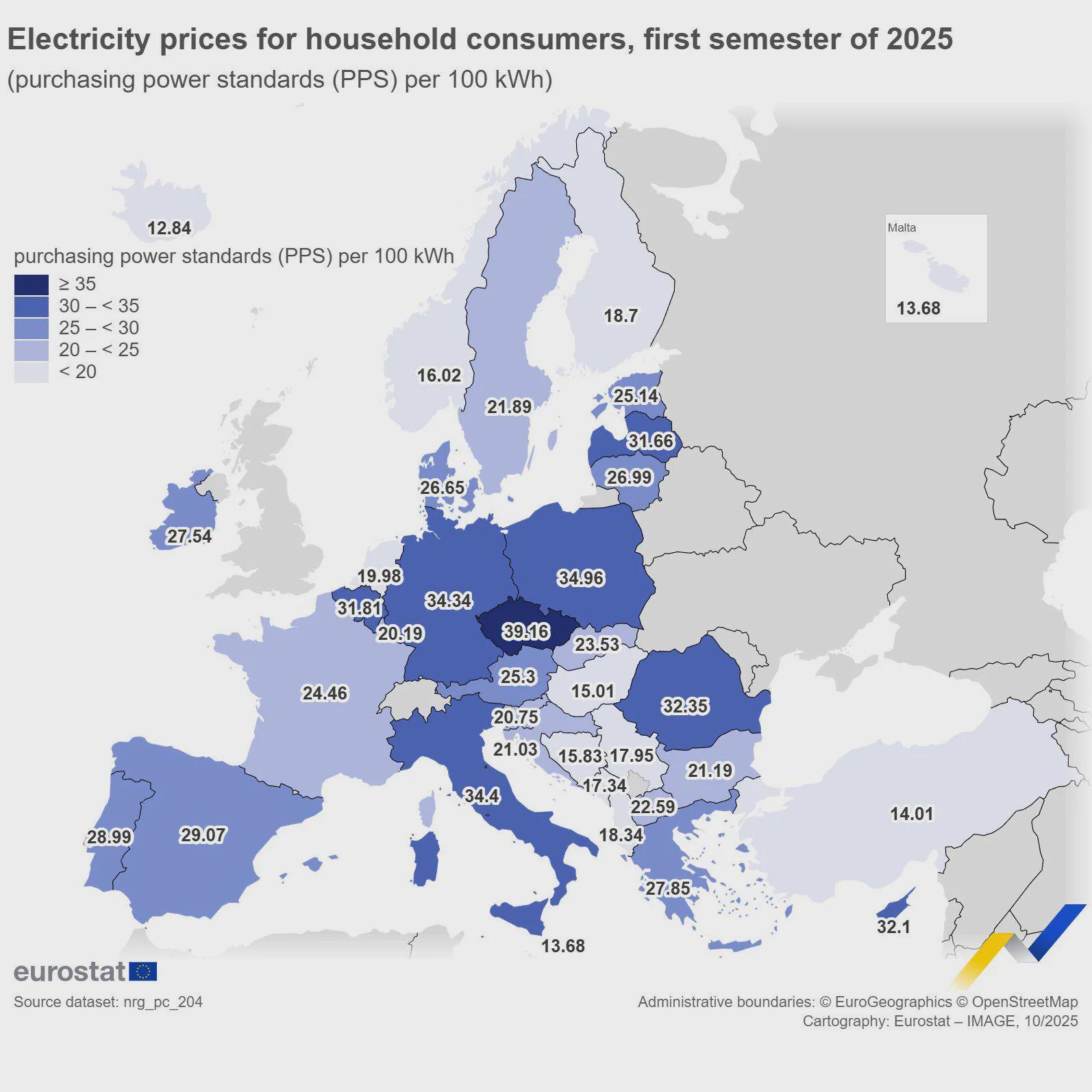Electricity Prices Map for First Semester 2025


Marcus Rodriguez
Historical Geography Expert
Marcus Rodriguez specializes in historical cartography and geographic data analysis. With a background in both history and geography, he brings unique...
Geographic Analysis
What This Map Shows
The "Electricity Prices Map for First Semester 2025" provides a comprehensive overview of electricity costs across various regions and countries. It highlights the differing price levels, allowing viewers to quickly discern where electricity is more or less expensive. This visual representation is crucial for understanding energy economics, consumer behavior, and even international trade dynamics in the energy sector.
Electricity prices are not just numbers on a bill; they reflect a complex interplay of factors including energy sources, demand, infrastructure, and government policies. This map visually articulates these complexities, showcasing how prices vary not only between countries but also within regions.
Deep Dive into Electricity Prices
Electricity pricing is influenced by a multitude of factors, making it a fascinating subject to explore. To begin with, the price of electricity is largely determined by the mix of energy sources used in each region. For instance, areas relying heavily on renewable sources like wind and solar may have lower prices due to the decreasing costs of these technologies. In contrast, regions dependent on fossil fuels may experience higher prices, particularly if those fuels are subject to market fluctuations.
Interestingly, demand for electricity can also drive prices up or down. Peak demand times, such as during extreme weather conditions, often see higher electricity prices as supply struggles to meet the surge in consumption. Conversely, off-peak hours may bring lower prices, making it beneficial for consumers to shift their usage patterns.
Another critical factor is government regulation. In some countries, electricity prices are heavily regulated by the government, which can stabilize prices but may not always reflect the true cost of production. Other regions might allow market forces to dictate prices, leading to significant fluctuations based on supply and demand dynamics.
According to data from the International Energy Agency (IEA) for the first semester of 2025, we can observe some notable trends. For example, European countries are likely to see varied electricity prices due to the diverse energy strategies employed. Scandinavian nations, which have invested heavily in hydropower, tend to enjoy lower electricity rates, while Southern European countries, relying more on fossil fuels, might witness higher costs.
Moreover, geopolitical factors play a pivotal role in electricity pricing. Events such as conflicts in oil-rich regions or changes in trade agreements can impact the availability and cost of energy resources. For instance, if a major oil supplier experiences instability, it could lead to increased electricity prices in various markets reliant on that supply.
Regional Analysis
Examining the map, we can categorize regions into distinct pricing brackets. In North America, for example, states like Texas, which benefit from a robust energy infrastructure and a mix of renewable and non-renewable sources, typically have lower prices compared to states like California, where stringent environmental regulations and high demand drive prices up.
In Europe, countries like Germany and France show contrasting trends. Germany's ambitious energy transition, or "Energiewende," has resulted in rising prices due to increased reliance on renewable sources and the phase-out of nuclear energy. Meanwhile, France's heavy reliance on nuclear power has allowed it to maintain relatively stable and lower prices, even amidst European price fluctuations.
Interestingly, in Asia, countries like China and India are facing unique challenges. Rapid industrialization and urbanization have led to soaring electricity demands, pushing prices higher. However, both countries are making strides in renewable energy, which could stabilize prices in the long run.
Significance and Impact
Understanding electricity prices is essential for multiple reasons. First, they directly impact consumers and businesses, influencing everything from household budgeting to operational costs for industries. High electricity prices can deter investment in certain regions, affecting local economies and job creation.
Moreover, as the world transitions toward greener energy, electricity pricing will play a crucial role in shaping the future energy landscape. With the rise of electric vehicles and the push for electrification of various sectors, the demand for electricity is only expected to increase. This means that how we price electricity today will have long-term implications for energy sustainability and economic stability.
Looking ahead, trends suggest that as more countries commit to reducing their carbon footprints, we may see a gradual alignment of electricity prices, particularly as renewable energy becomes more prevalent. In fact, the ongoing technological advancements in energy storage and smart grid systems could help stabilize prices and improve efficiency.
In summary, the "Electricity Prices Map for First Semester 2025" not only provides a snapshot of current electricity costs but also serves as a window into the evolving dynamics of energy economics. As we continue to navigate the complexities of energy production and consumption, understanding these price variations will be increasingly important for policymakers, businesses, and consumers alike.
Visualization Details
- Published
- October 29, 2025
- Views
- 10
Comments
Loading comments...